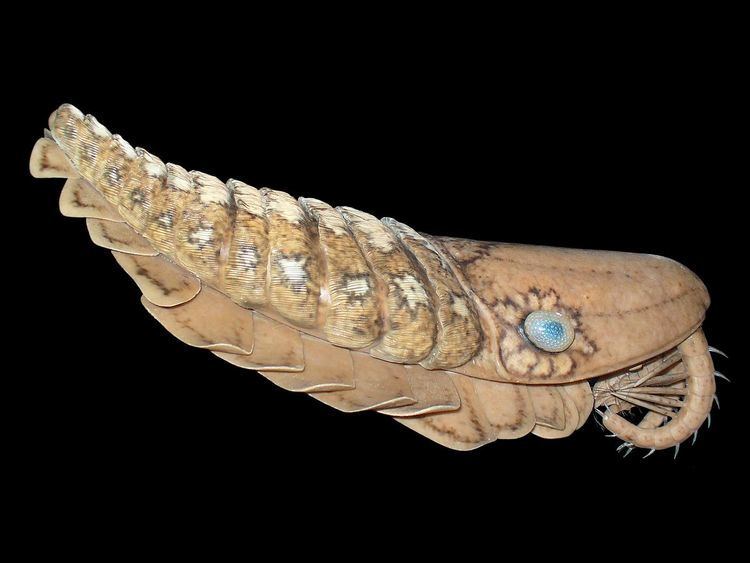Scientific name Radiodonta Rank Order | ||
 | ||
Lower classifications | ||
Radiodonta is a clade of stem-group arthropods that was successful worldwide during the Cambrian period, and included the earliest large predators known. Some of the most famous species included in Radiodonta are the Cambrian taxa Anomalocaris canadensis, Hurdia victoria, and Peytoia nathorsti, the Ordovician Aegirocassis benmoulai and the Devonian Schinderhannes bartelsi.
Contents
Etymology
The name Radiodonta refers to the radial arrangement of tooth plates surrounding the mouth.
Definition
In 2014, the clade Radiodonta was defined as the most inclusive clade including Anomalocaris canadensis but not Paralithodes camtschaticus.
Classification
Traditionally, all taxa currently included within Radiodonta have been placed within one family, Anomalocarididae. The original description of the order Radiodonta included Anomalocaris, Laggania, Hurdia, Proboscicaris, Cassubia, Amplectobelua, Cucumericrus, and Parapeytoia. Proboscicaris is now regarded as a junior synonym of Hurdia, and Parapeytoia is considered to be a megacheiran. The phylogenetic position of Cucumericrus is unclear, as it is in a polytomy with Radiodonta and Euarthropoda and thus may belong to either or neither.
Taxonomy
Phylogeny
The first in-depth phylogenetic analysis of Radiodonta was conducted by Vinther et al. in 2014, and it was expanded by Cong et al. later that year by the addition of Lyrarapax unguispinus. The analysis was further modified in 2015 by Van Roy et al. with modified characters and the inclusion of Cucumericrus decoratus and Aegirocassis benmoulae.
Description
The original diagnosis of order Radiodonta is as follows:
Radiodontids are bilaterally symmetrical, elongate arthropods with a nonmineralized cuticle typically most robust in the jaws and claws. The body is subdivided into two tagmata, much like the prosoma and opisthosoma of chelicerate arthropods.
Typically, the front part shows no external segmentation, bears one pair of preoral claws, a pair of prominent eyes, and ventral jaws with radiating teeth. Some forms have additional rows of teeth and three or four postoral gnathobasic limb pairs. The trunk is metameric, typically with about 13 segments laterally developing imbricating lobes for swimming and gills for respiration, and may end in a prominent three-part tail. Some forms have gnathobasic trunk limbs.
The most anterior structures on the head are the frontal appendages. They are homologous with the antennae of Onychophora and the labrum of Arthropoda, and not homologous with the chelicerae of Chelicerata or the antennae of other arthropods. The mouth is on the ventral side of the head and is surrounded by a ring of tooth plates known as the oral cone.
Contrary to the original diagnosis, no known member of Radiodonta is known to have legs. Rather, the legs were modified into fin-like lateral flaps. These flaps are homologous to the endopod of the biramous limbs of many arthropods, and dorsal to them were a second set of flaps which bore gills and are homologous to the exopod.
